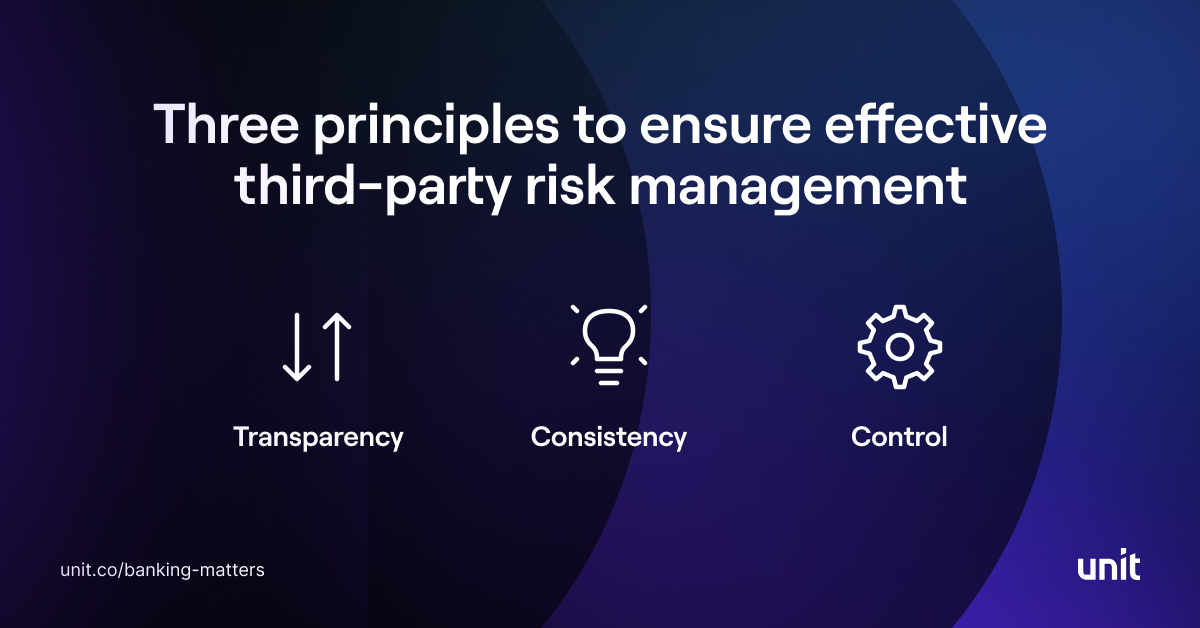

April 25, 2024
8 minutes
“Banking Matters” is a series written for banks and the companies that want to work with them. The goal is to share knowledge and best practices about how to build a compliant, scalable digital financial services ecosystem.
In a recent post, we outlined how to structure these partnerships to enable strong bank oversight. Today, we’ll discuss the importance of third party-risk management—and what that means for banks. We’ll also share our perspective on three key principles providing the foundation for strong third-party risk management practices.
Who has the primary responsibility for ensuring that financial products distributed through bank partnerships are safe and compliant? The answer, for regulators, is simple: the bank.
Banks have long relied on third-party service providers to support a wide variety of functions in connection with their banking programs. For example, banks often rely on:
Each of these service providers has an obligation to the bank to operate lawfully and in compliance with the terms of their agreement with the bank. But ultimately, the bank has the primary responsibility for ensuring that its products are offered and delivered in a safe and sound and compliant manner.

The same principle applies to third-party program managers, which function as a digital distribution channel for the bank’s financial products.
This was reiterated in June 2023, when the three prudential bank regulators (the Federal Reserve Board, the FDIC, and the OCC) published interagency guidance on managing the risks inherent in third-party relationships.
They affirmed that banks are responsible for ensuring that their financial services are offered in a safe and sound manner. Thus, the bank should adopt risk-management policies commensurate with its size, complexity and risk profile, and the nature of its third-party relationships.
The guidance covers a variety of topics—discussing, for example, what constitutes “critical activities” performed by a third party and offering examples of risk management at each stage of the third-party relationship life cycle.
Given the number of service providers banks rely on every day, running a bank can feel like conducting an orchestra.
The stakes are high, and success depends on each instrument playing its part well. Here are three principles for effective third-party risk management that can help ensure that each banking function is performing in harmony.


Last updated
April 25, 2024
